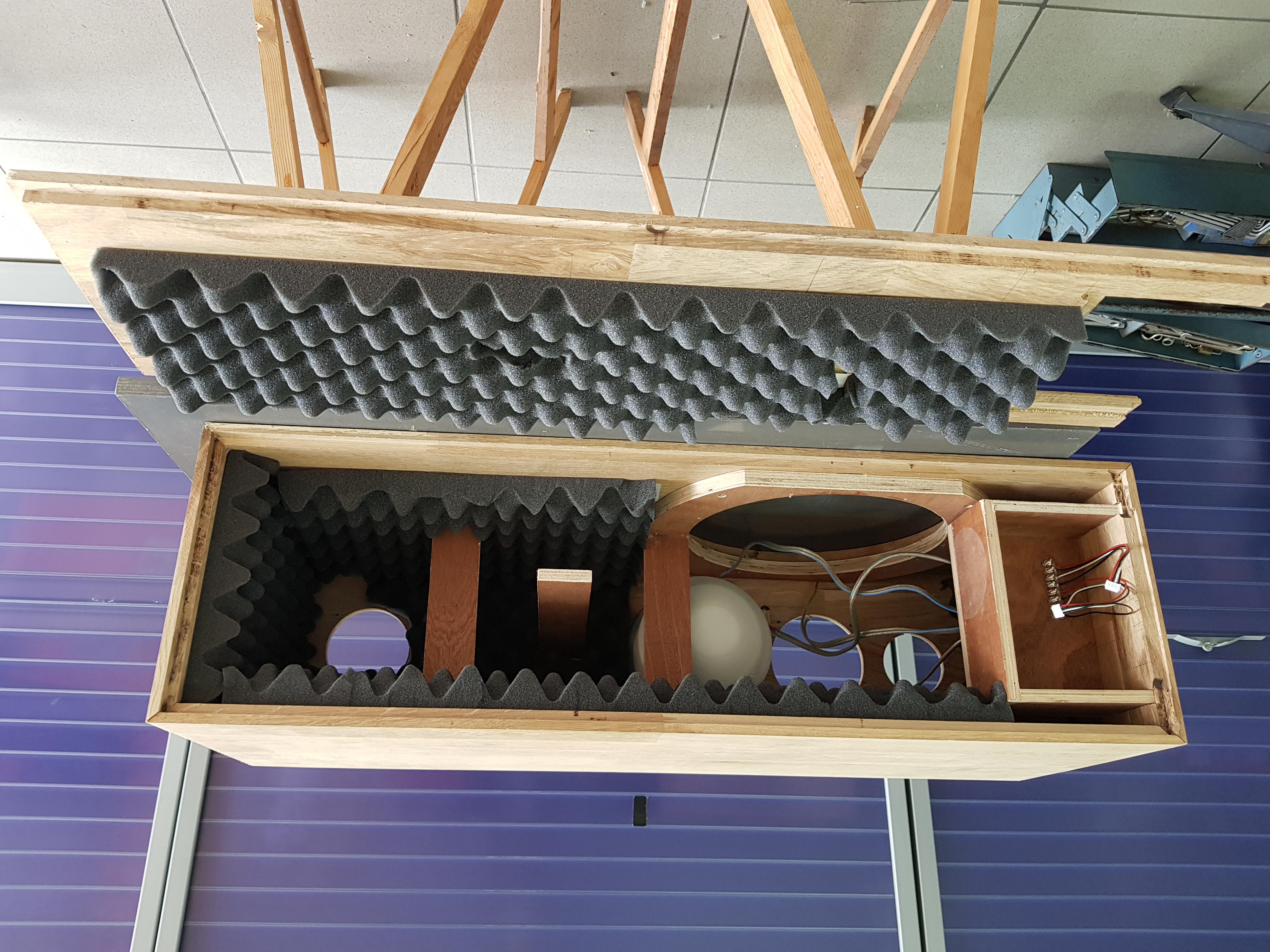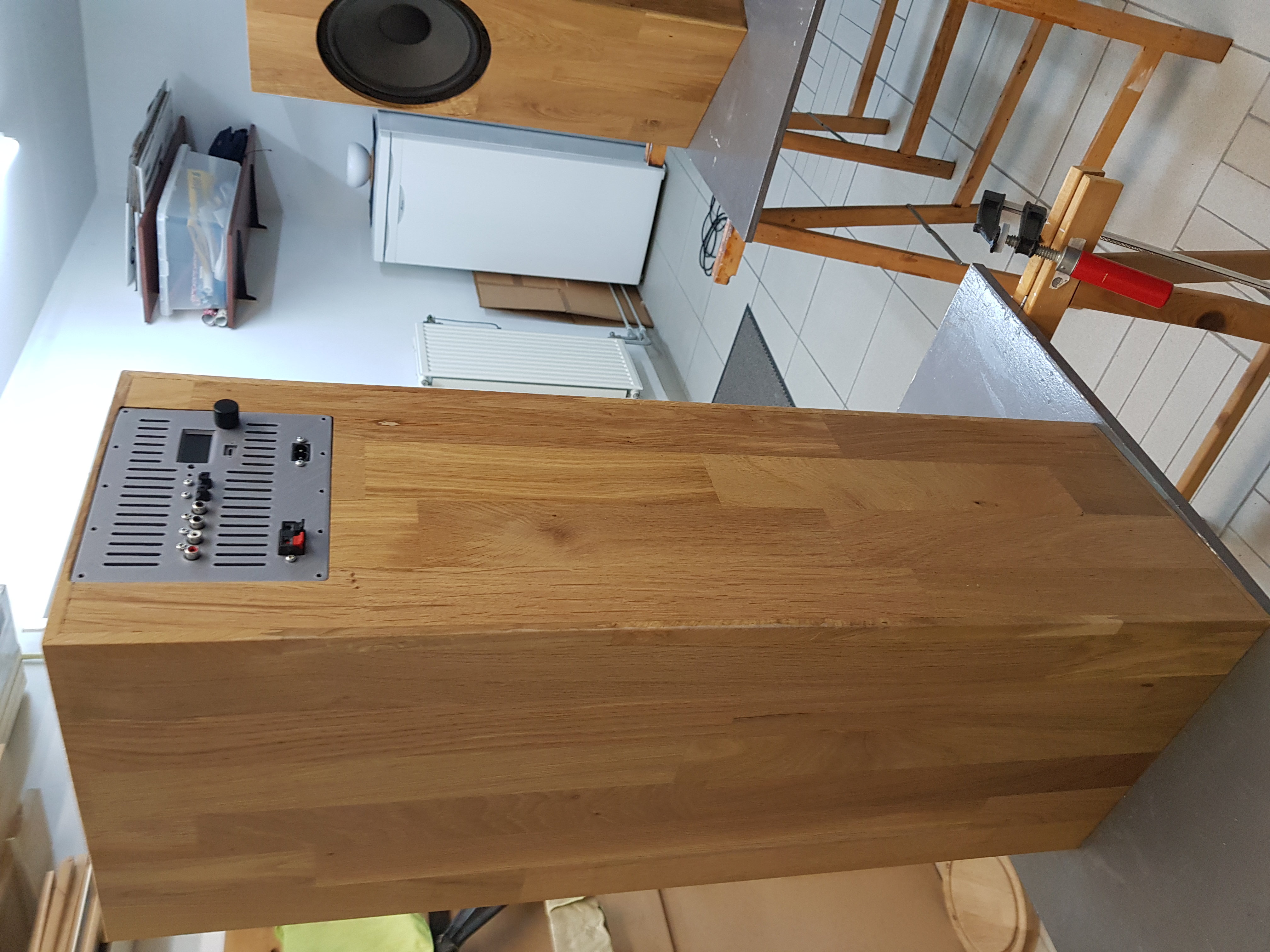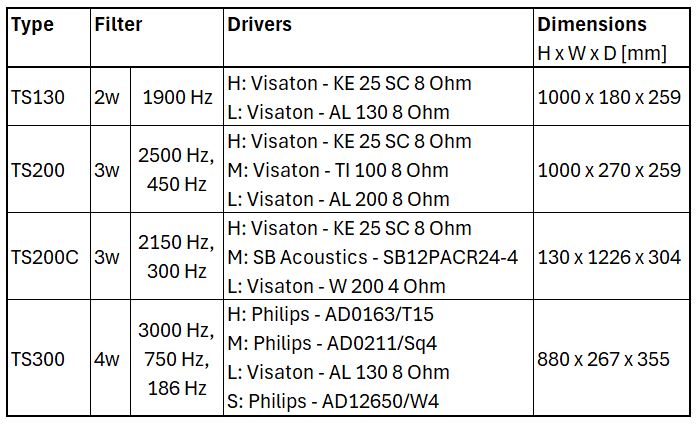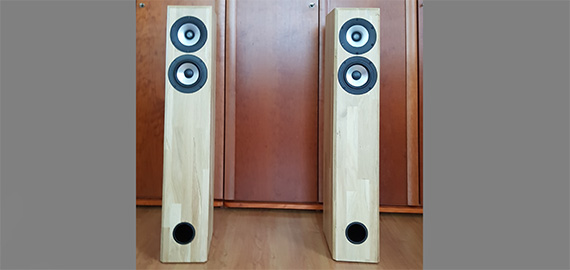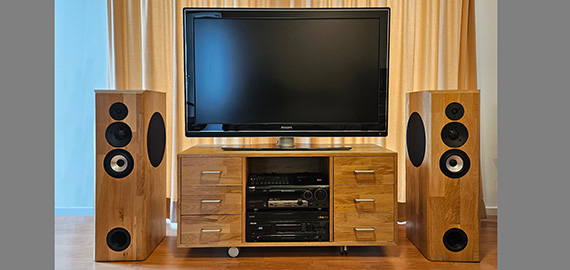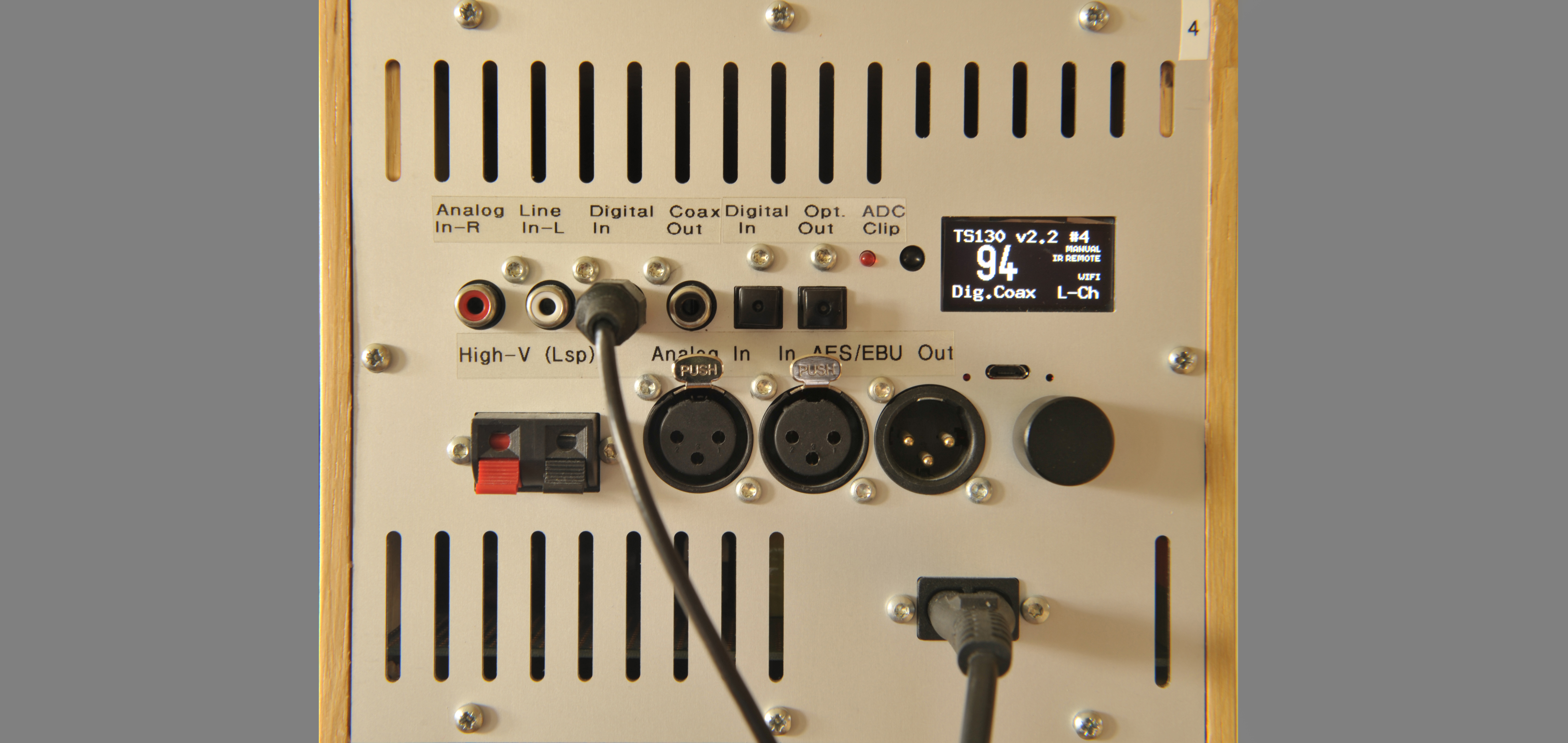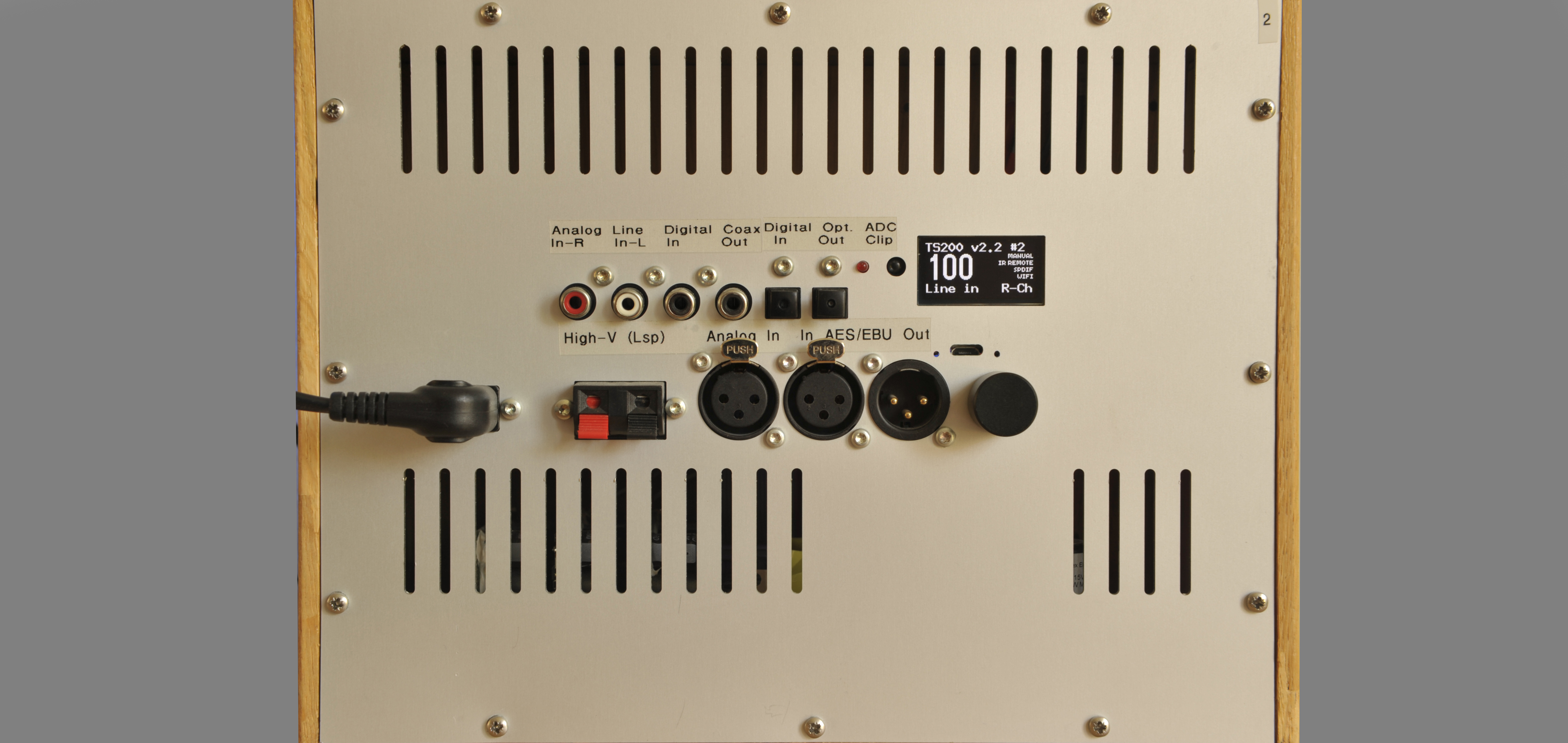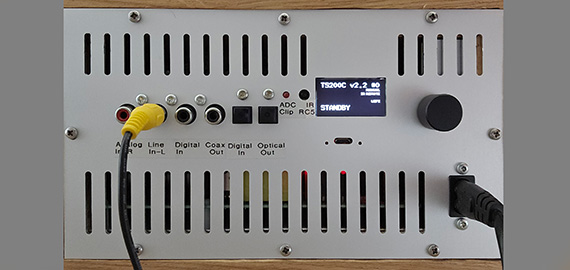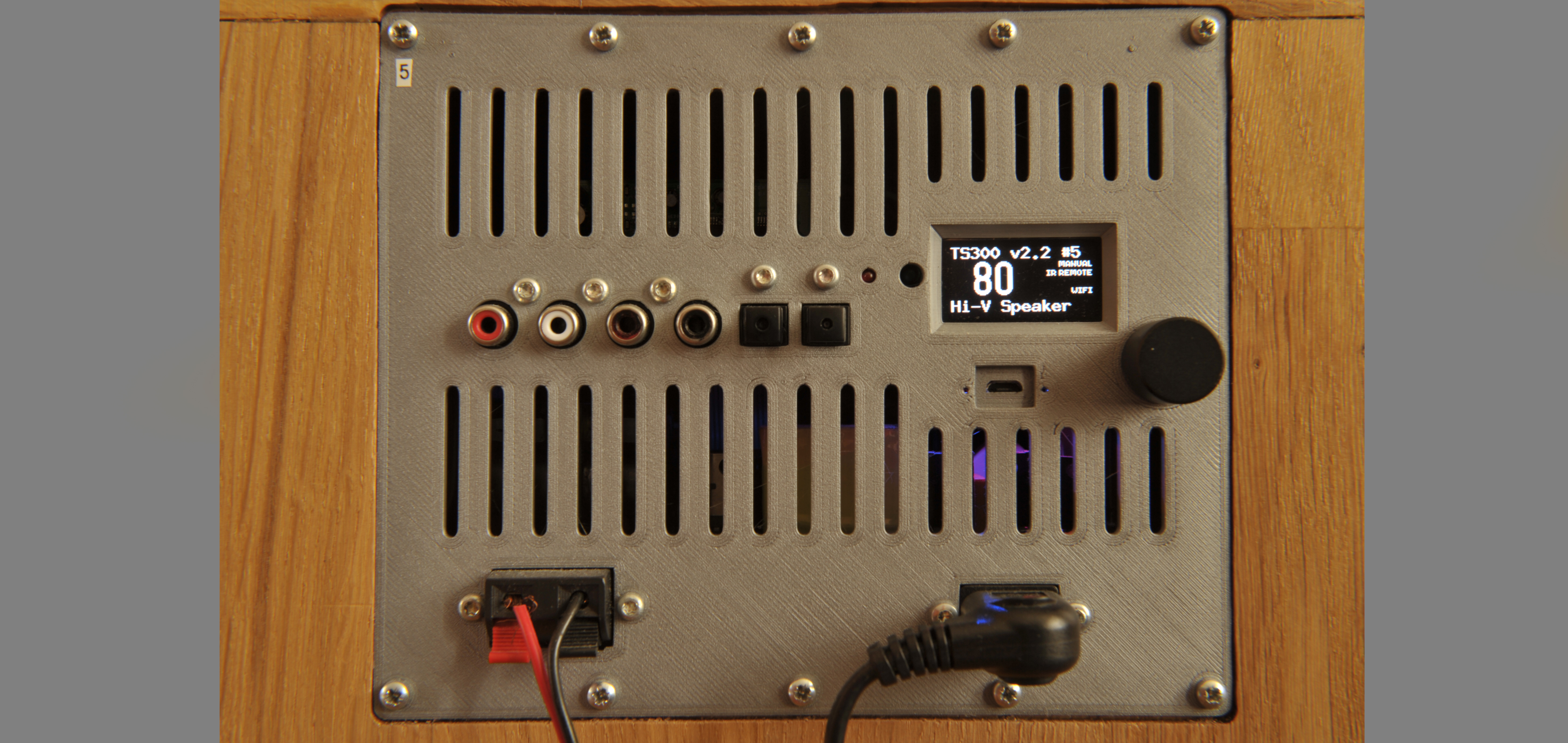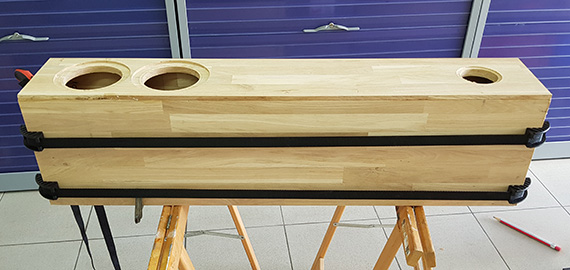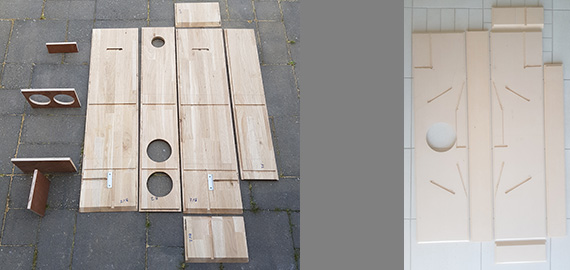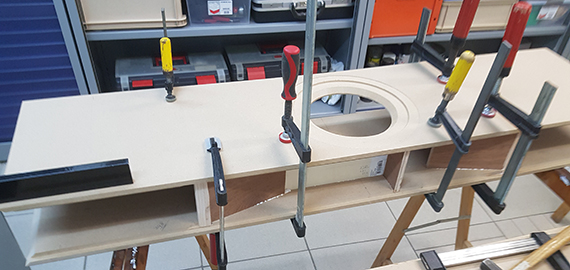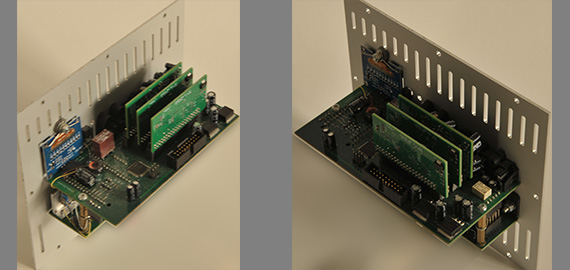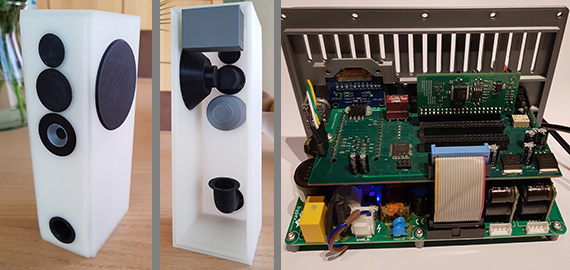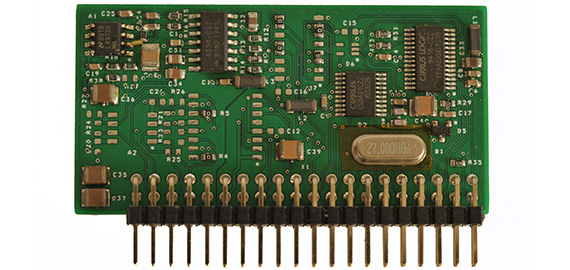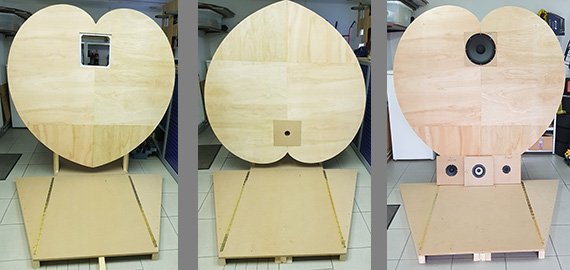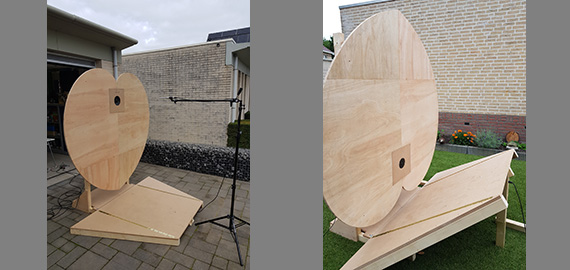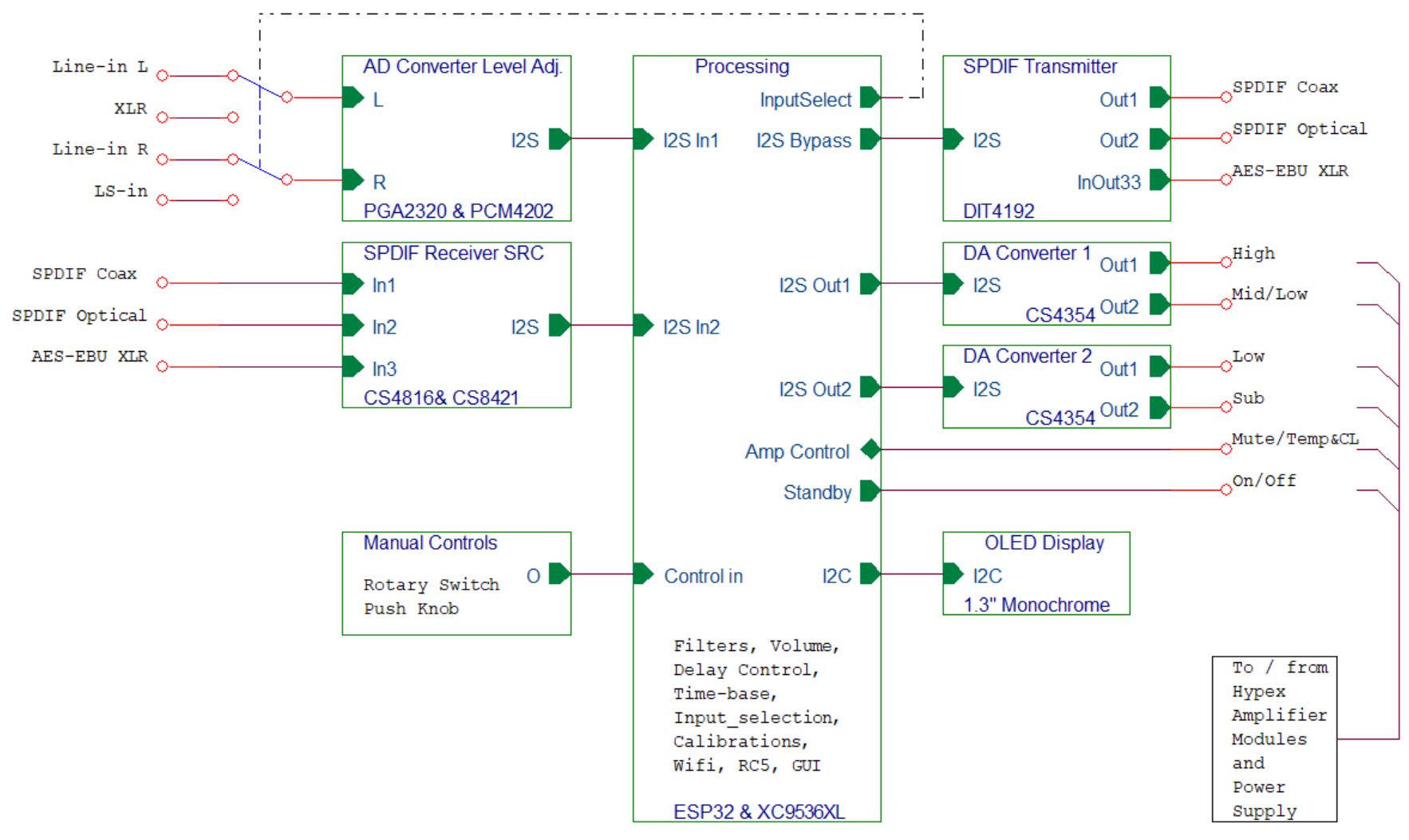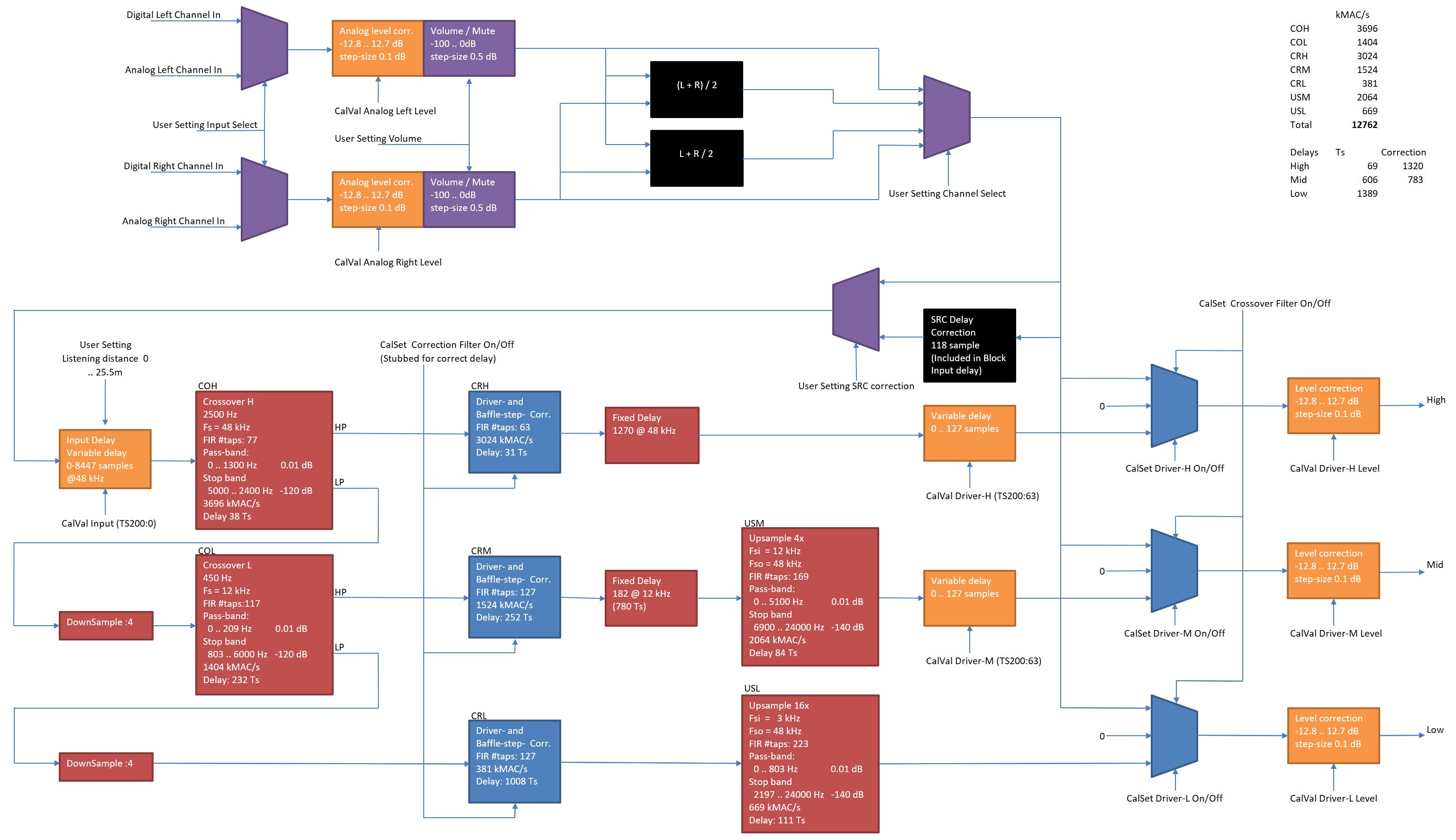Due to my retirement, I have finally gotten around to a long-cherished hobby.
Ever since I took a digital signal processing course in 1998, I have had the idea of applying this to loudspeaker boxes. However, at the beginning of this century, the hardware required for this was still far too large and expensive. But with the introduction of smartphones, processors have also come onto the market that contain a lot of functionality and a large capacity for performing complex calculations. And that for reasonable costs.
I started setting up an architecture around the ESP32 processor. And I have managed to implement a principle that is (as far as I know) unique. For experts: I use FIR filters. Not only to implement the function of a crossover filter, but also to make corrections per speaker. The FIR filter has a few minor disadvantages (requires a lot of computing capacity and some, but surmountable, delay), but also the major advantage that they provide a linear phase shift.
My first design was a 3-way system, followed by a 2-way and even a 4-way system. With the latter, the delay was only just acceptable.
I used solid oak carpentry panels (18 mm) for the cabinets. Spacers serve to strengthen larger surfaces. All electronics are housed in a separate compartment. Bevels have been added to the corners at the front to reduce the influence of the corners on the spectrum (baffle-step). From an aesthetic point of view, I chose to place all the drivers at the center of the front.
I use Arta software for measurements. To measure the driver properties I made casings of 2, 6 and 15 liters, and a measuring baffle with a special shape. A heart shape serves to distribute the baffle step over all frequencies and therefore minimize it. I prefer to take measurements on the complete box in the open air to eliminate the influence of reflections as much as possible.
The architecture of the input circuit and filters is as shown below. And below it shows the signal-path in the processing (TS200). I use Hypex modules for the power amplifiers and power supply.
